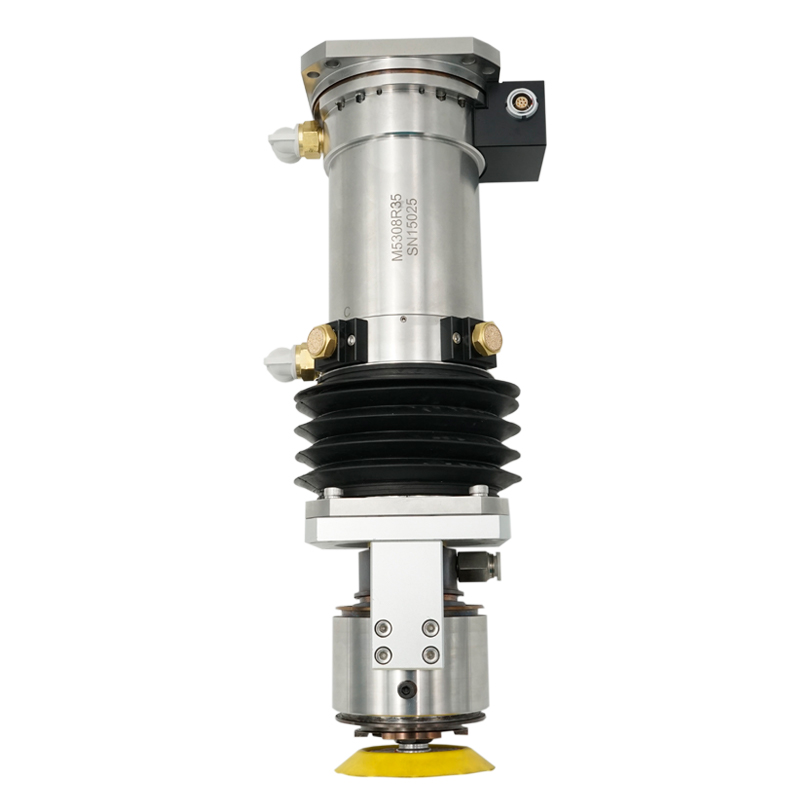Henry Zumbrun Bio Metrology Understanding the Challenges and Solutions When Measuring Small Forces Measuring small forces accurately can be a significant challenge for calibration labs, researchers, and engineers Published: Tuesday, March 14, 2023 - 12:03 Comment Rss Send Article (Must Login) Print Author Archive S mall-force measurement is crucial for many applications, such as testing materials, monitoring biomedical devices, and studying the behavior of cells and molecules. In this article, we’ll explore the challenges of measuring small forces and the solutions that are available to address them. There are several challenges to measuring small forces: 1. Sensitivity: Measuring small forces requires high-sensitivity instruments that are capable of detecting very small changes in force. However, these instruments can also be affected by environmental factors, such as temperature and vibrations, which can result in measurement errors. 2. Dynamic range: The dynamic range of a measuring instrument refers to the range of forces that can be measured accurately. 3. Signal-to-noise ratio: The signal-to-noise ratio refers to the ratio of the desired signal to the unwanted noise that is present in the measurement. Measuring small forces often requires a high signal-to-noise ratio, but this can be difficult to achieve with traditional instruments. 4. Controlling the forces: Having a control system to control the force, so as not to overload the force-measuring device. Like what you're reading? Log in or create FREE account to continue Enter your Quality Digest username OR email address. Enter your Quality Digest password. By logging in you agree to receive communication from Quality Digest. Privacy Policy. Remember me Create a FREE account Forgot My Password Quality Digest does not charge readers for its content. We believe that industry news is important for you to do your job, and Quality Digest supports businesses of all types. However, someone has to pay for this content. And that’s where advertising comes in. Most people consider ads a nuisance, but they do serve a useful function besides allowing media companies to stay afloat. They keep you aware of new products and services relevant to your industry. All ads in Quality Digest apply directly to products and services that most of our readers need. You won’t see automobile or health supplement ads. Our PROMISE: Quality Digest only displays static ads that never overlay or cover up content. They never get in your way. They are there for you to read, or not. So please consider turning off your ad blocker for our site. Thanks, Quality Digest
S mall-force measurement is crucial for many applications, such as testing materials, monitoring biomedical devices, and studying the behavior of cells and molecules. In this article, we’ll explore the challenges of measuring small forces and the solutions that are available to address them. Three Axis Load Cell

There are several challenges to measuring small forces: 1. Sensitivity: Measuring small forces requires high-sensitivity instruments that are capable of detecting very small changes in force. However, these instruments can also be affected by environmental factors, such as temperature and vibrations, which can result in measurement errors. 2. Dynamic range: The dynamic range of a measuring instrument refers to the range of forces that can be measured accurately. 3. Signal-to-noise ratio: The signal-to-noise ratio refers to the ratio of the desired signal to the unwanted noise that is present in the measurement. Measuring small forces often requires a high signal-to-noise ratio, but this can be difficult to achieve with traditional instruments. 4. Controlling the forces: Having a control system to control the force, so as not to overload the force-measuring device.
Quality Digest does not charge readers for its content. We believe that industry news is important for you to do your job, and Quality Digest supports businesses of all types.
However, someone has to pay for this content. And that’s where advertising comes in. Most people consider ads a nuisance, but they do serve a useful function besides allowing media companies to stay afloat. They keep you aware of new products and services relevant to your industry. All ads in Quality Digest apply directly to products and services that most of our readers need. You won’t see automobile or health supplement ads. Our PROMISE: Quality Digest only displays static ads that never overlay or cover up content. They never get in your way. They are there for you to read, or not.
So please consider turning off your ad blocker for our site.
Henry Zumbrun is president of Morehouse Instrument Co. where he has managed the force and torque calibration lab and services in the family-owned business since the 1990s. Morehouse helps labs lower their force measurement uncertainties and torque, resulting in more-accurate measurements, which lowers costs, reduces risk, and increases quality. Morehouse designs and manufactures products in line with customer requirements, lean, Six Sigma, and best practices guidelines.He has taught various classes and sessions at NCSLI, MSC, A2LA, etc., authored several published papers, written a book titled “Force Calibration for Technicians and Quality Managers: Top Conditions, Methods, and Systems that Impact Force Calibration Results,” and was the primary Author on the “G126 - Guidance on Uncertainty Budgets for Force Measuring Devices” for A2LA. He has been part of the ASTM E28 committee for well over a decade and has made several contributions to the ASTM E74 and E2428 standards through the committee.

6 Axis Load Cell Ethernet © 2023 Quality Digest. Copyright on content held by Quality Digest or by individual authors. Contact Quality Digest for reprint information. “Quality Digest" is a trademark owned by Quality Circle Institute, Inc.